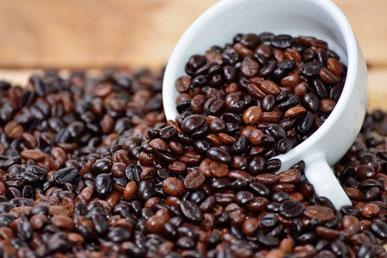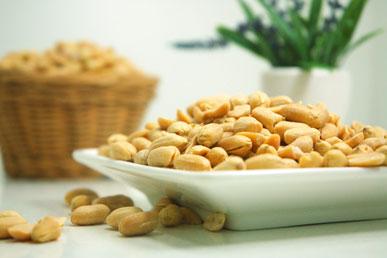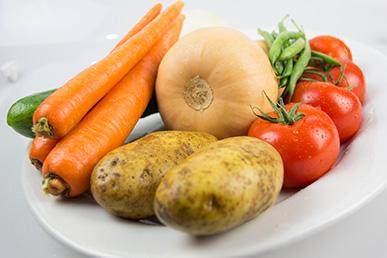
Penguins are very curious birds and are almost fearless on land. Unlike tamed animals, which have ceased to be afraid of humans only due to frequent contact with them, most penguins do not naturally fear humans.
According to many who have visited Antarctica, the birds mistook them for penguins, albeit a little strange. However, there is no way to give scientific confirmation of whether this is true. This is likely due to the fact that penguins do not have land-based predators in Antarctica or nearby offshore islands.
The penguin family includes 18 modern species. All members of this family of flightless seabirds swim and dive well.
Where do penguins live?
The ancestors of penguins lived in a temperate climate – when Antarctica was not yet bound by a glacier. The climate on the planet has changed. The continents drifted, Antarctica shifted to the South Pole and became covered with eternal ice. Animals left from there or died out, but the penguins, having adapted to the cold, remained. True, before there were much more of them – in the course of evolution, at least 40 species that inhabited our planet more than 60 million years ago died out.
Penguins live in the open sea of the Southern Hemisphere: in the coastal waters of Antarctica, New Zealand, southern Australia, South Africa, along the entire coast of South America from the Falkland Islands to Peru, in the Galapagos Islands near the equator (see map below).
Penguins prefer coolness, therefore, in tropical latitudes, they appear only with cold currents – the Humboldt Current on the western coast of South America or the Benguela Current, which occurs at the Cape of Good Hope and washes the western coast of South Africa.
The largest concentration of penguins is in Antarctica and on the islands adjacent to it.
The warmest habitat for penguins is the Galapagos Islands, located near the equator.
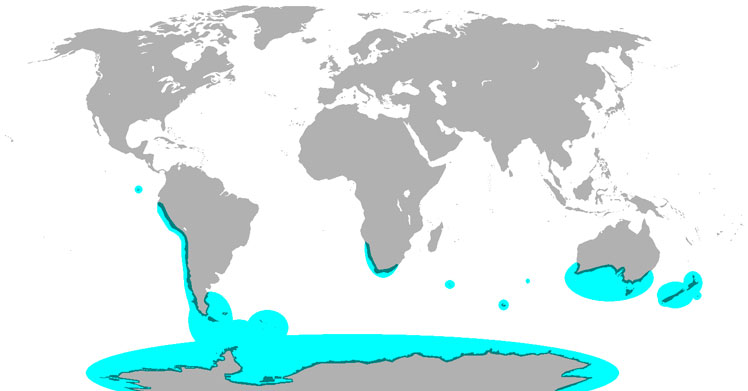
Area where penguins live | wikimedia.org
Features of the movement of penguins
Many make fun of the clumsy gait of penguins. And indeed, she seems quite funny. However, this is purely an external impression. The fact is that such a gait allows the bird to save a huge amount of energy.
In the course of the research, scientists measured the vertical, lateral and translational components of the movement of king penguins while walking along a specially prepared "podium". It turned out that penguins save 80% of their precious energy by shuffling, which is very important in Antarctic conditions. If the birds raised their legs with large feet, it might look beautiful, but they would spend much more strength.
When leaving the water, penguins can jump over the height of the coastline up to 1,8 meters. On land, penguins reach speeds of 3–6 km/h. On the ice, penguins can also move quickly – they move down from the mountains, lying on their stomachs. Some species cover so many kilometers between the sea and the place where their colony settled.
Swimming is the fastest way for dolphins to travel. At the same time, the animal jumps out of the water for a short time, like a dolphin. The reasons for this behavior are not clear: it is likely that this helps to reduce the resistance of the current, or is intended to confuse natural enemies. The average speed that penguins develop in the water is 5-10 km/h, but higher rates are possible over short distances.
During the day, while feeding, penguins can swim about 27 km. At a depth of more than 3 meters, birds spend an average of about 80 minutes a day. In diving, some penguins break records. Smaller species such as the gentoo penguin can stay underwater for 1-2 minutes and dive to depths of up to 20 meters, but emperor penguins can stay underwater for 18 minutes and dive to depths of over 530 meters.
Although the abilities of emperor penguins remain poorly understood, it is known that when diving, the animal's pulse is reduced to 1/5 of the resting heart rate; thus, oxygen consumption is reduced, which allows you to increase the duration of being under water with the same volume of air in the lungs. The mechanism for regulating pressure and body temperature during diving to great depths remains unknown.

Papuan penguin (subantarctic penguin) | flickr.com

Emperor penguins | wikimedia.org
How are penguins different from other birds?
The body shape of the penguins is streamlined, which is ideal for movement in the water. Their musculature and bone structure allows them to use their wings like propellers underwater. Unlike other flightless birds, penguins have a sternum with a distinct keel, to which powerful muscles are attached.
Swimming under water differs from flying in the air in that the same energy is expended on raising the wing as on lowering it, since the resistance of the water is greater than the resistance of the air. Therefore, the shoulder blades of penguins have a larger surface compared to other birds, on which the muscles responsible for lifting the wing are attached.
The pectoral muscles are very developed and sometimes make up to 30% of the body weight, which is several times higher than the similar ratio in the most powerful flying birds.
Another clear difference between penguins and other birds is bone density. All birds have tubular bones, which makes their skeleton lighter and allows them to fly or run fast, while in penguins they are similar to the bones of mammals (dolphins and seals) and do not contain internal cavities. Penguins have stiff feathers that cover their body tightly.
Why are penguins not afraid of the cold?
Within their habitat, penguins are exposed to extreme climatic conditions and have various anatomical features that allow them to adapt to these conditions.
The primary mechanism against hypothermia is a thick layer of fat (from 2 to 3 cm), over which there are 3 layers of waterproof, short, tight-fitting feathers evenly distributed throughout the body. The air in the layers of feathers also effectively protects against heat loss while in the water.
Penguins have a well-developed "heat transfer system" in their fins and legs: the incoming arterial blood gives off heat to the colder venous blood flowing back to the body, thus minimizing heat loss.
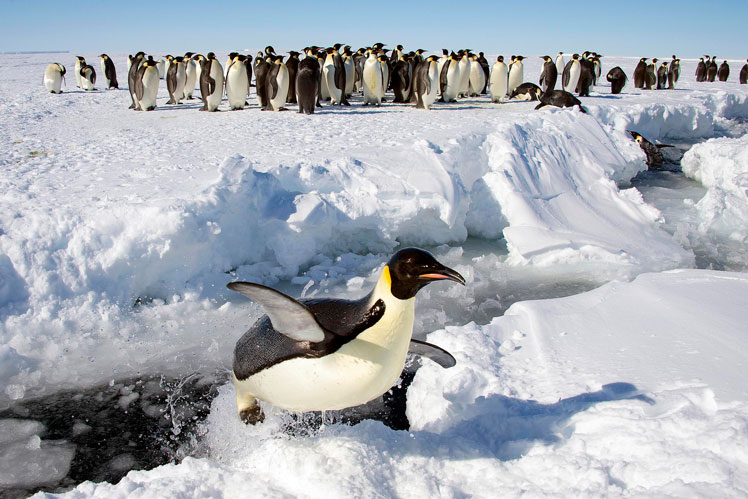
Emperor penguins | flickr.com
Penguin growth
Of all 18 species, the largest is the emperor penguin, its height is 110–120 cm, and its weight is up to 46 kg. The smallest representatives are small penguins (or blue penguins), their height is 30–45 cm, and their weight is 1–2,5 kg.
Such significant differences are explained by Bergman's rule, of which penguins are a frequent example. Bergman's rule states that animals living in cold regions have larger body sizes, since this contributes to a more rational ratio of the volume and surface of the animal's body and, thereby, to a decrease in heat loss.
What do penguins eat?
Penguins feed on fish (Antarctic silverfish), anchovies or sardines, as well as crustaceans (euphausiids, krill) and small cephalopods, which they hunt by swallowing directly under water. If different species share the same habitat, their diets tend to differ: Adélie penguins and chinstrap penguins, for example, prefer krill of different sizes.
During molting, penguins do not eat anything. However, some species of penguins (Adélie penguins, emperor, chinstrap and crested penguins) are forced to completely refuse food even during the brooding period. This period in different species has a different duration: from 1 month (for Adélie penguins and crested penguins) to 3,5 months (for male emperor penguins). Birds lose up to half their body weight as they are forced to take energy for metabolism from fat stores accumulated in advance.
Male and female subantarctic, magnificent, little and donkey penguins replace each other when hatching chicks, this allows them to starve only during the molting period.
Penguins drink mostly sea water. Excess salt is secreted through special glands located above the eyes.
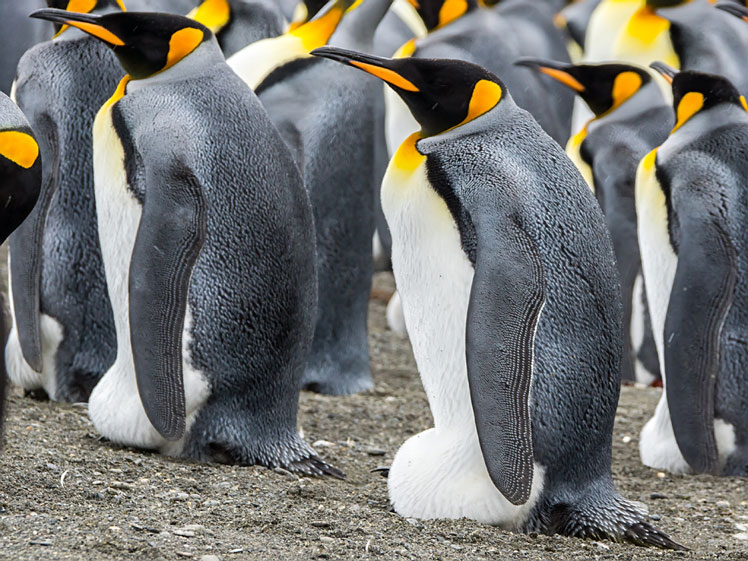
Royal penguins | flickr.com
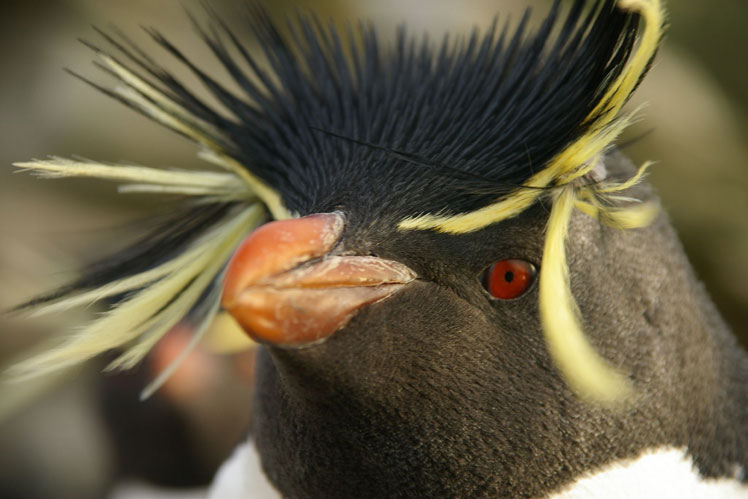
Crested penguin | wikipedia.org
Penguin Enemies
Because penguins nest mostly in isolated areas, adults on land have little to no natural predators. However, mammals introduced by humans, such as dogs and cats, pose a serious threat to these birds. For self-defense, penguins use their beak and fins, which are effective weapons. But chicks left unattended by their parents become easy prey for the brown skua (large seabird). Some species of gulls use every opportunity to steal penguin eggs.
Leopard seals, Antarctic fur seals, Australian and New Zealand sea lions, as well as killer whales and sharks hunt penguins at sea, in particular the above-mentioned seal species often patrol shallow waters near colonies where penguins cannot use their advantage – high maneuverability. Scientists estimate that about 5% of all Adélie penguins per year die in this way.
This is probably the reason for the seemingly inexplicable fear of birds before water, to which they are so well adapted. Before entering the water, the penguins approach the shore in small groups and seem to hesitate, because apparently no one wants to be the first to enter the sea (penguin effect). This procedure often takes up to half an hour. As soon as one of the penguins gathers courage and finally jumps into the water, the rest follow him.
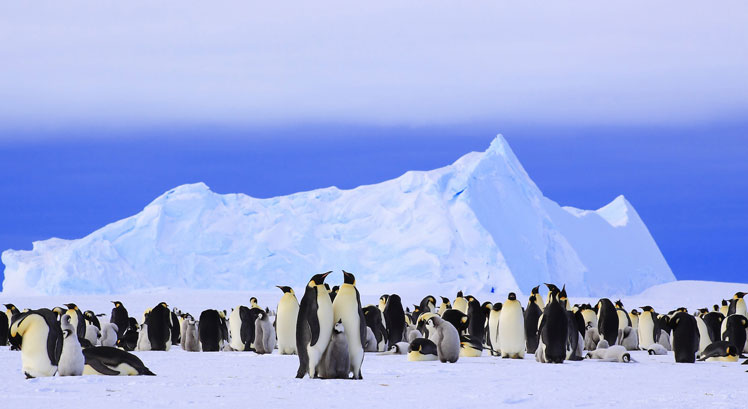
Emperor penguins | flickr.com
Family life of penguins
Penguins are a model of constancy in family life. There are practically no “divorces” among these birds, and they remarry only if they become widowed.
And yet it should be noted that the "percentage of divorces" in penguins of different species is not the same. For example, the percentage of great penguins who choose another partner the next year is about 14, which is very low; their loyalty to their partner is also emphasized by the fact that 12% of couples have been in a relationship for more than 7 years. But the situation with Adélie penguins is different – more than 50% of animals of this species change their partner for the next year, respectively, there are no cases when the relationship lasted more than 6 years.
Penguins nest most often in large colonies, often numbering tens of thousands of pairs or more. Both parents alternately take part in incubation of eggs and feeding of chicks.
While emperor and king penguins incubate their single egg on their paws, females of all other penguin species lay two eggs in a conventional nest, which they build from materials widely found in nature – grass or small pebbles.
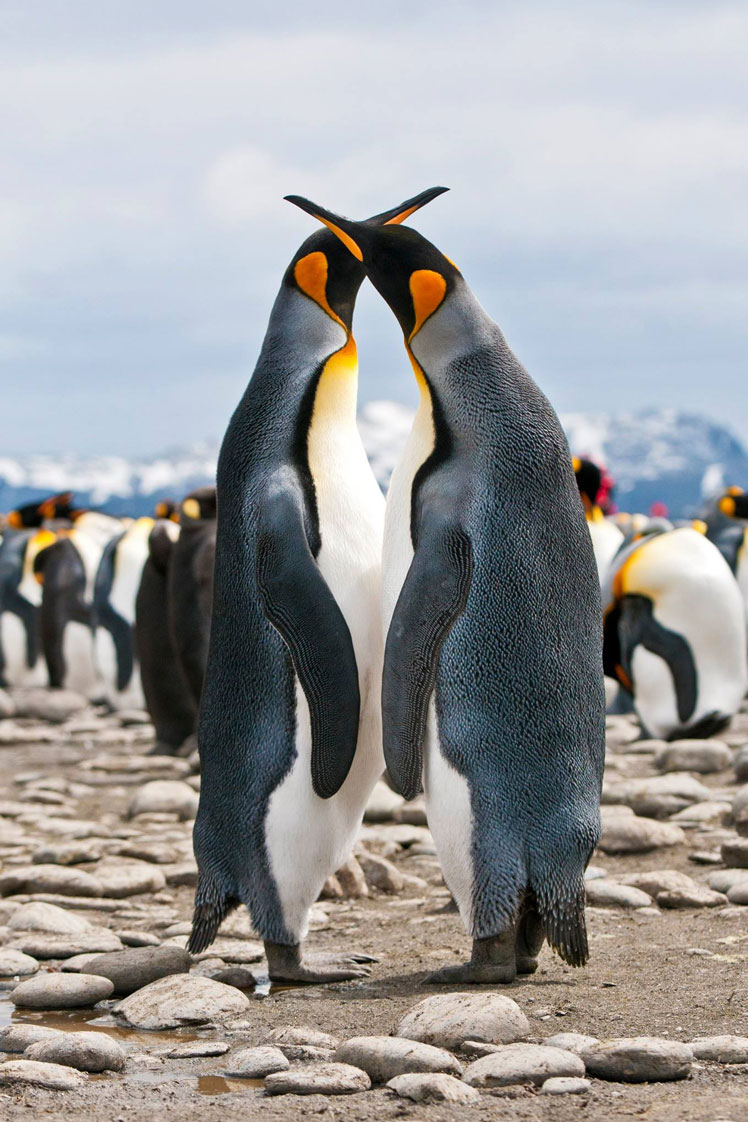
Royal penguins | wikimedia.org
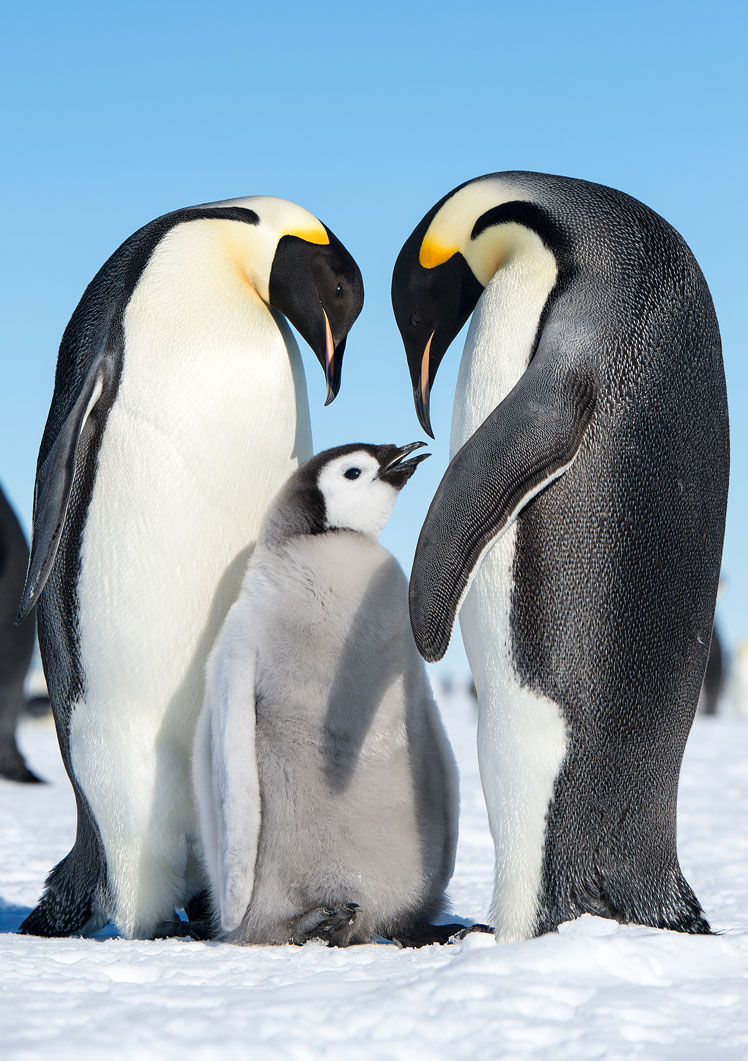
Emperor penguins | flickr.com
The chances of penguins surviving for the first 12 months of life are quite low. For example, among Adélie penguins, after the first year, only about half of all chicks remain alive. The decisive factor on which the chances of survival largely depend is the stock of fat accumulated while living in the colony, which in turn depends on feeding, that is, on the success of the parents in hunting.
The chances of survival of adults are much higher: in little Adélie penguins they are from 70% to 80%, in large emperor penguins even more than 90%.
The life expectancy of penguins is over 25 years.
You can learn more interesting facts about penguins from the videos below, which we have selected for you.
Robot spy in a flock of penguins
Penguin chicks saved by an unusual hero
In the video player, you can turn on subtitles and select their translation into any language in the settings
Tiny penguin makes a death rush from a giant leopard seal
Algoa Bay – the last refuge of the African penguin
In the video player, you can turn on subtitles and select their translation into any language in the settings
South Georgia – penguin paradise in the South Atlantic
In the video player, you can turn on subtitles and select their translation into any language in the settings



